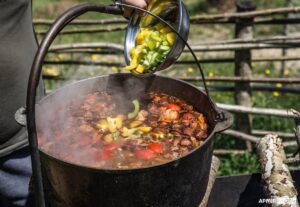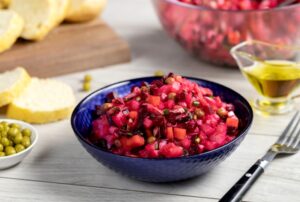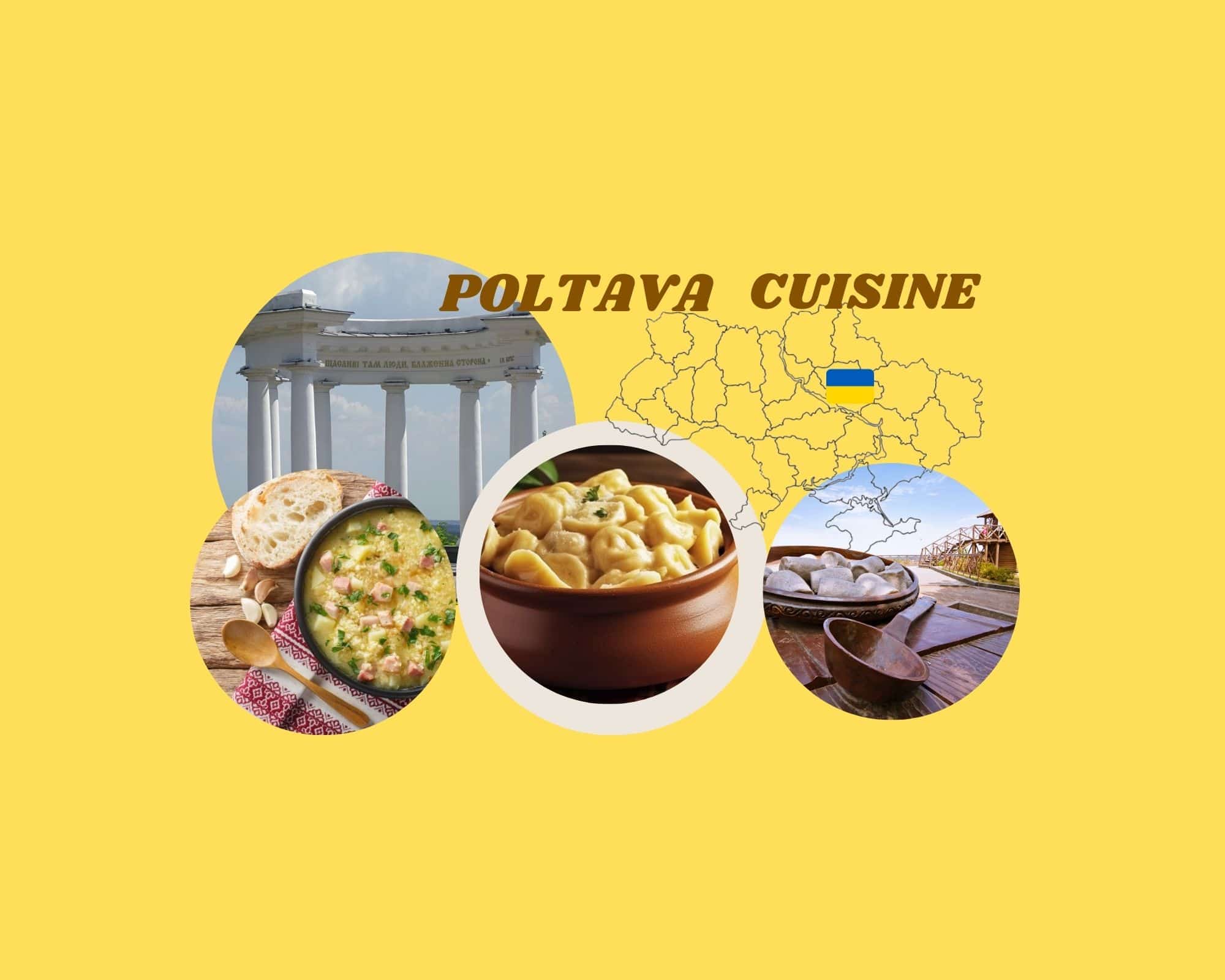National culinary traditions and language, literature, and art hold significant cultural value. Ukrainian cuisine, known for its diverse dishes offering exceptional nutritional value and taste, has evolved over the years.
Historical records and archaeological findings reveal the Central Dnipro region’s rich and varied food preferences during the Kyivan Rus period. The cuisine included:
- Domestic meat (pigs, sheep, goats, cows, calves).
- Fowl (chickens, geese, ducks, pigeons, grouses, and partridges).
- Processed grain products.
- Various vegetables.
Garden vegetables such as fresh and pickled cabbage, beets, radishes, carrots, cucumbers, and pumpkins were particularly prominent.
Later, Ukrainian cuisine became increasingly diverse — borscht and other dishes became traditional. Blood sausages (krovianka) were made using animal blood, while honey was cherished, creating a variety of non-alcoholic and fermented beverages.
Here are 10 distinctive features of Ukrainian national cuisine that distinguish it from other cuisines.
Pies and pastry
Baked goods made from sour rye and wheat flour were essential for Ukrainians for a long time. These include pies, korovai (festive bread), as well as fresh dough dishes like dumplings, halushky, pancakes, kysil (sweetened fruit puree thickened with potato starch), porridge, bread with poppy seeds and honey, and kutia.
Finding another cuisine that values pies as highly as Ukrainian cuisine is difficult. The prevalence of pies in Ukrainian cuisine is attributed by many to the presence of the pich (a traditional Ukrainian stove made of brick or stone or intended for heating a room and/or cooking food) in most households.
Boiling and stewing instead of frying
As we know, the primary heat treatment method depends on the stove design. Therefore, boiling, stewing, and baking were the most common cooking methods. In addition, people used to bake their porridge, meat dishes, and various casseroles.
As a result, people got used to boiled, stewed, and baked food. Even salt traders (chumaks) who transported salt from Crimea and the Azov region dug temporary pits in the ground and cooked traditional dishes like kulish (porridge made of flour and salo) or dumplings. Even when they hunted game, they mostly boiled the meat instead of roasting it on a spit.
Onions and garlic
The key to the culinary diversity of Ukrainian dishes is the combination of different cooking methods, the use of various fats, and the use of local spices such as onions, garlic, horseradish, dill, and parsley. Other spices like pepper, cardamom, cloves, and cinnamon were borrowed later, in the 16th-17th centuries.
Traditional beverages
Ukrainian cuisine boasts unique non-alcoholic and alcoholic beverages such as mead, kvas, zbytni (a liqueur drink made from honey, spices, and fragrant herbs), and uzvar (sweet compote of dried fruits and berries). Horilka, a Ukrainian vodka, originated in the 15th century.
Healthy vegetables
Ukrainian cuisine traditionally features sliced vegetables in salads and vinehrets rather than chopped mixtures. The practice of using salads and vinehrets, borrowed from Western European cuisine, emerged much later, in the 19th century.
Tendency towards vegetarianism
For a long time, meat dishes were considered festive and not consumed daily by Ukrainians even before the past century. Grain and flour-based dishes were often complemented with fish, mushrooms, forest berries, vegetables, and milk.
Simple and refined cooking
While Ukrainian cuisine embraces simple cooking techniques like boiling and stewing, many recipes exhibit complexity. Borshch is an excellent example of this phenomenon, having up to 20 ingredients depending on the recipe.
Focus on soups
Soups played a central role in Ukrainian households. First, broth with herbs, later borshch, soups, solyanka, kulish, and other dishes mainly based on plant-based ingredients were consumed daily, at least once.
Salo
Salo is consumed separately, primarily raw or baked, as cracklings or as a fat base for different dishes. Sometimes it is even added to dishes with lean meats to add richness, and salo is even used in sweet dishes combined with sugar or molasses.
This attitude towards pork connects Ukrainian cuisine with Western Slavic and Hungarian cuisines.
Beetroots in menu
Ukrainian borscht is the first dish that naturally comes to mind when thinking of beetroot. Beets are also commonly used in composed or tossed salads and side dishes, and table beets with intense red color are particularly valued for their delicious and festive appeal.
Just like any other cuisine, Ukrainian culinary traditions undergo constant changes. While some dishes may lose popularity over time, others are making a comeback in kitchens and are enjoyed by people today. Despite the evolving nature of Ukrainian cuisine, these ten principles continue to shape local recipes, infusing them with new ideas and ingredients while maintaining a unique twist.









